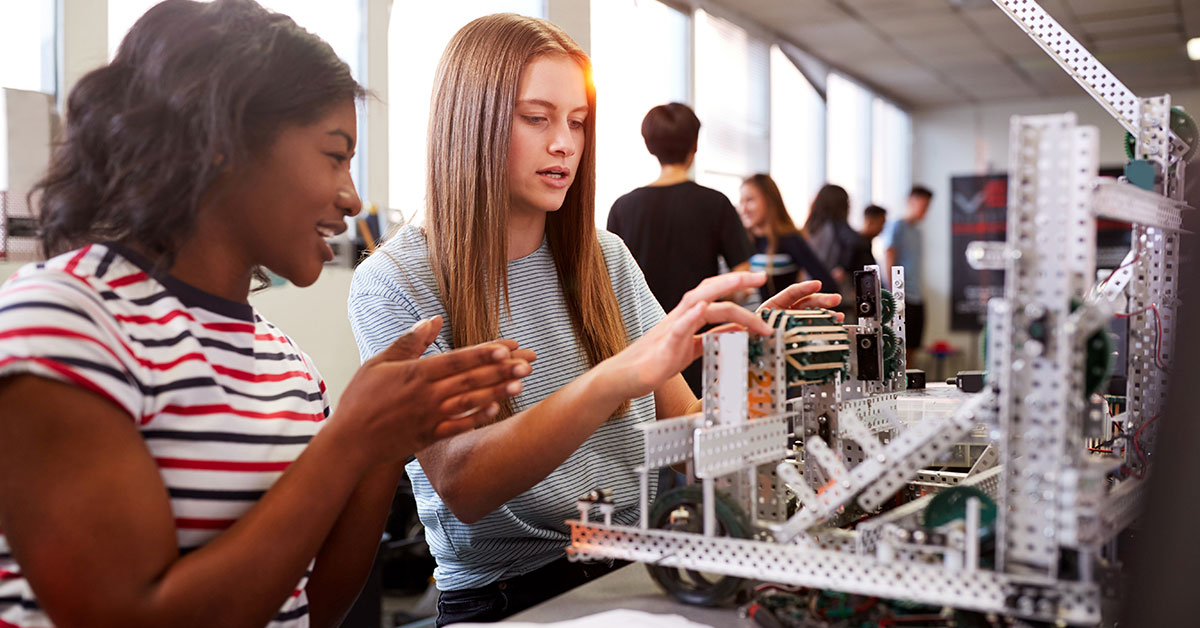In the ever-evolving landscape of education, incorporating technology in the classroom has become increasingly important. As educators, we constantly seek innovative methods to engage our students and foster their creativity. One such groundbreaking tool is Artificial Intelligence (AI). This blog post series introduces innovative strategies for utilizing AI to cultivate rich, human thinking in your classroom.
This strategy is part of a series of Inquiry Insider Blog posts sharing 16 innovative strategies that actually boost learning. To make sure you catch them all, Subscribe to Inquiry Insider!
The Strategy: AI-Assisted Invention and Engineering
The premise is simple yet powerful: identify a real-world problem, use AI to generate a range of inventive solutions, and then challenge students to bring these ideas to life. This method combines the predictive and analytical power of AI with the creativity and resourcefulness of students, culminating in a competition to see which group’s solution is most effective.
Step 1: Identifying the Problem
Start with a brainstorming session where students identify a problem they want to solve. This could be anything from environmental issues to everyday inconveniences. Encouraging students to choose a problem ensures they are invested and interested in finding a solution, making the learning experience more meaningful.
Step 2: Harnessing AI for Creative Solutions
Once the problem is chosen, use an AI tool like ChatGPT to generate a variety of potential solutions. AI’s ability to process vast amounts of information and think outside the box can lead to some unexpected and innovative ideas. Present these AI-generated solutions to the class, sparking inspiration for the next phase.
Step 3: Student Groups Choose Their Inventions
Divide the class into groups, and allow each group to select one AI-generated idea to develop further. This stage cultivates decision-making and team-building skills as students collaborate to choose the most promising idea. It also gives them a sense of ownership over the project.
Step 4: Engineering the Solutions
Now, students begin the exciting work of turning their chosen idea into a reality. This phase can involve designing, building prototypes, testing, and iterating – all essential skills in engineering and design thinking. Provide resources and guidance, but let the students take the lead in developing their inventions.
Step 5: The Invention Competition
Once the groups have developed their solutions, organize a competition to test each invention’s effectiveness in solving the identified problem. This can be a class event or even involve the wider school community. One engaging wrinkle is to invite celebrity judges from local businesses to judge the different creations. The competition not only adds excitement but also provides a practical understanding of how solutions work in real-world scenarios.
Educational Benefits
This AI-assisted invention strategy offers numerous educational benefits:
- Encourages Creative Problem Solving: Students learn to think creatively and innovatively in finding solutions.
- Enhances Understanding of AI: Students gain practical experience in how to collaborate productively with Artificial Intelligence.
- Develops Engineering Skills: Building and testing prototypes teaches valuable engineering and design skills.
- Promotes Teamwork and Collaboration: Working in groups enhances communication and collaboration skills.
- Fosters Critical Thinking: Evaluating the effectiveness of their solutions develops critical thinking and analytical skills.
Integrating This Strategy into Your Teaching
This strategy targets students’ engineering and invention skills, but it can certainly be adapted to various subjects, from science and technology to social studies and environmental education. Tailor the problems and solutions to fit the curriculum and the students’ age and skill levels. Incorporating AI into classroom activities like AI-nvention is an excellent way to engage students in hands-on, practical learning. It not only makes learning more interactive and fun but also prepares students for a future where technology and human creativity are increasingly intertwined.
